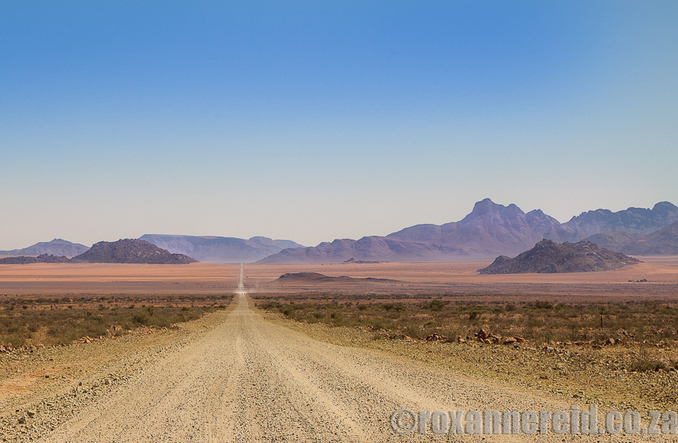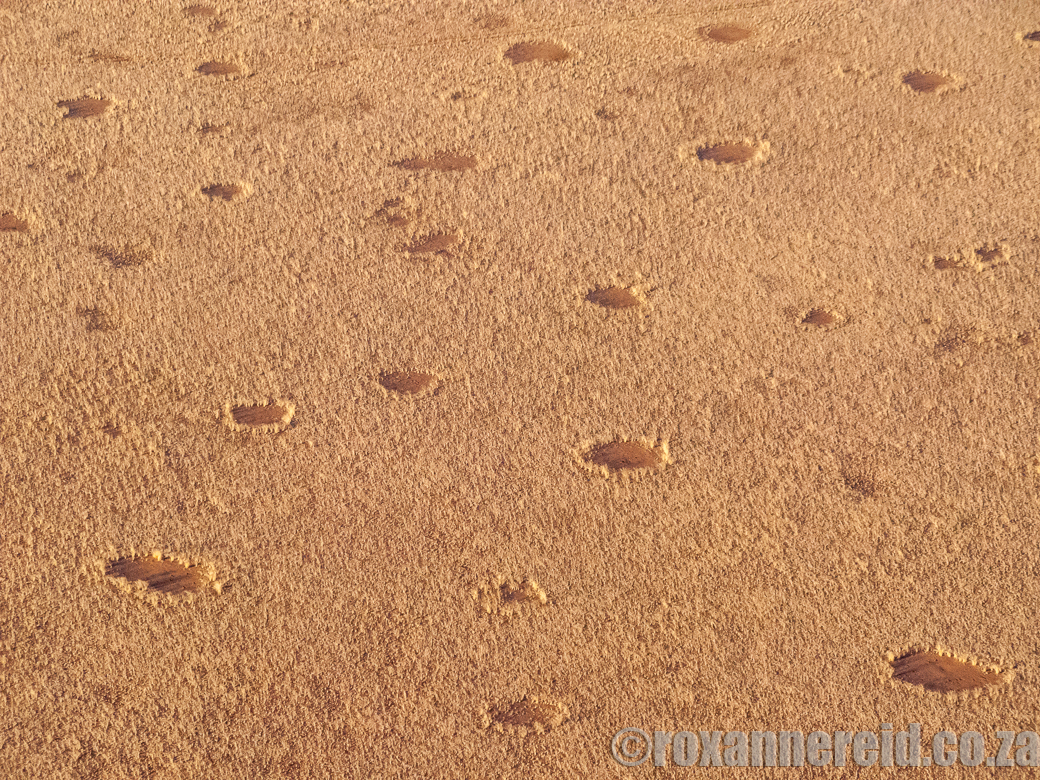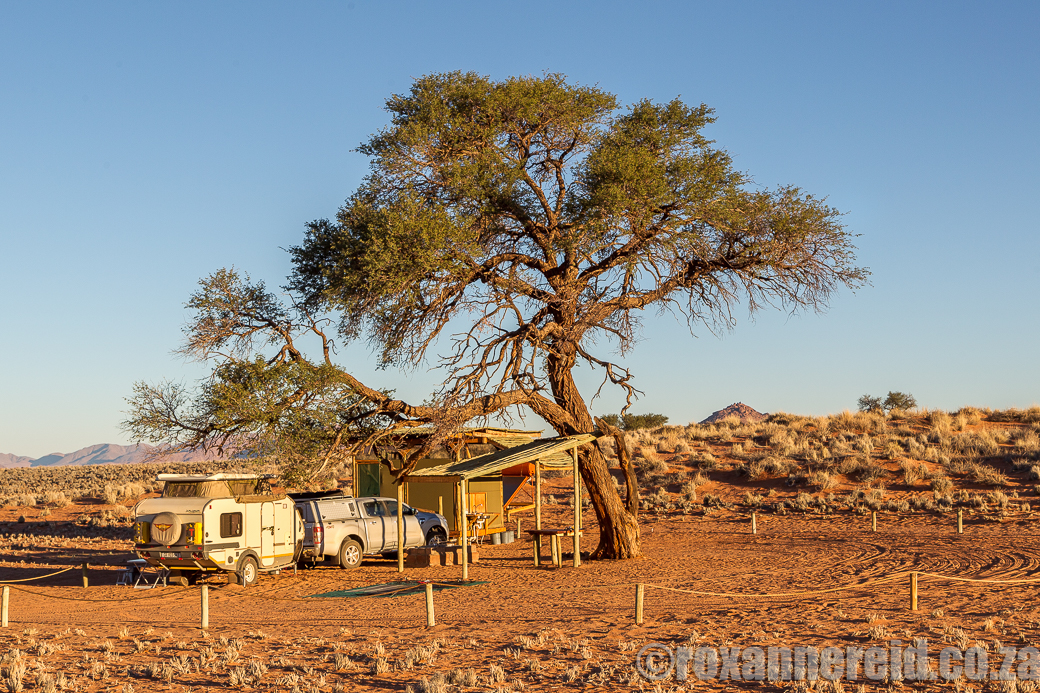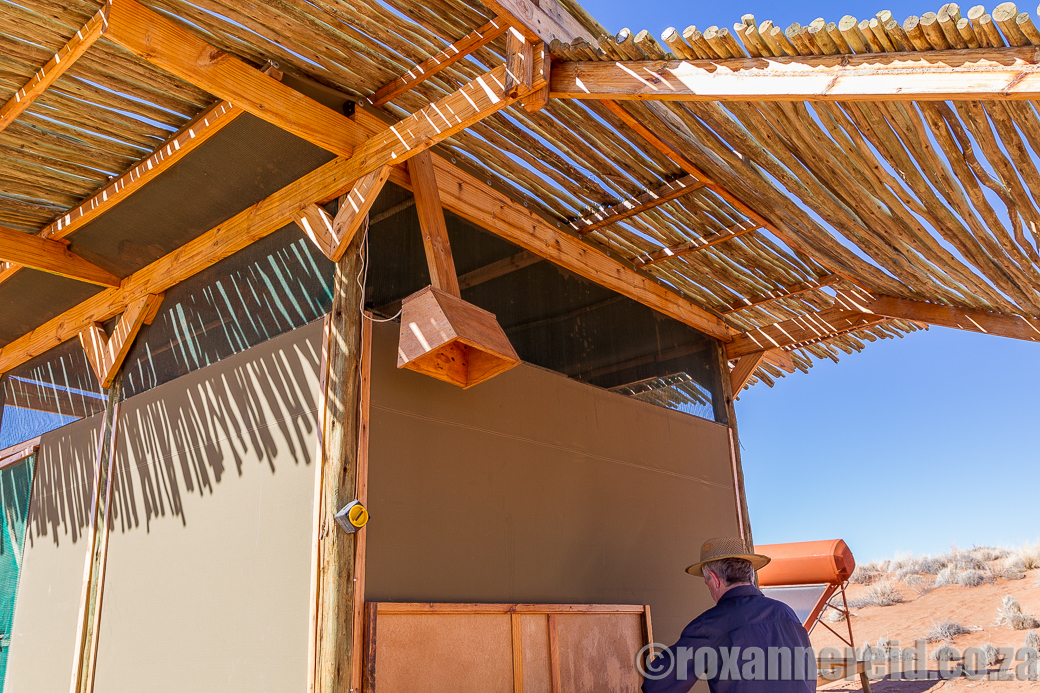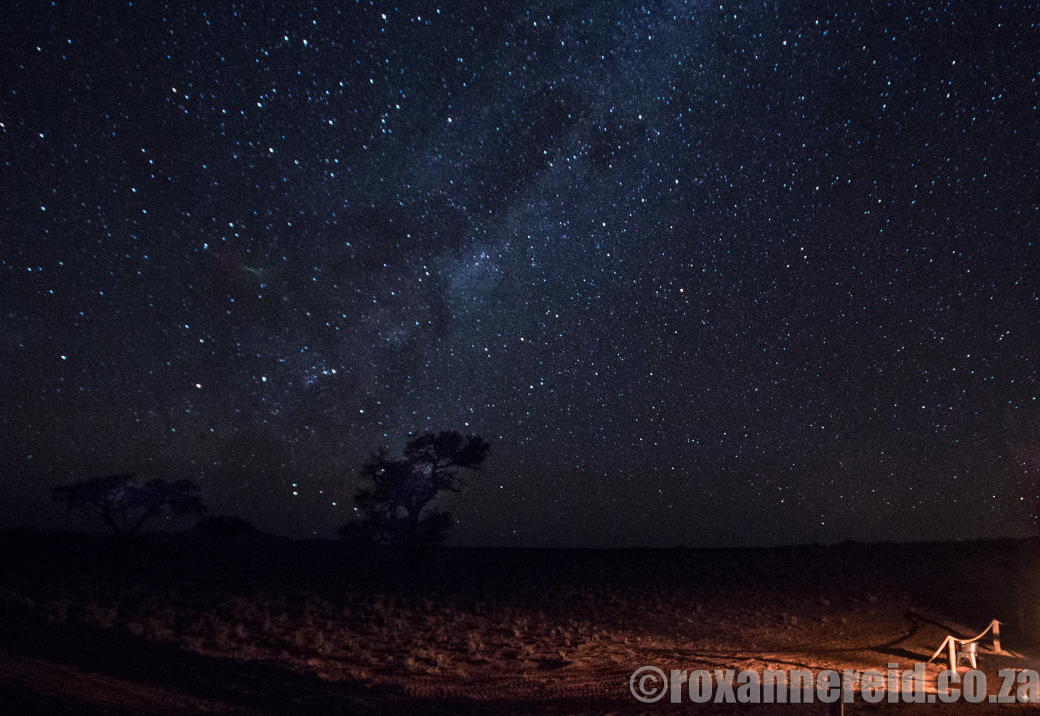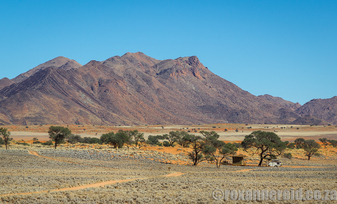
By Roxanne Reid
When I visited the NamibRand Nature Reserve in southern Namibia it was love at first sight, if for nothing else than its dazzling landscapes and its peaceful isolation. But there’s even more to love, like its fairy circles and dark skies.
When I visited the NamibRand Nature Reserve in southern Namibia it was love at first sight, if for nothing else than its dazzling landscapes and its peaceful isolation. But there’s even more to love, like its fairy circles and dark skies.
There’s a strong conservation and education ethic here too, something you’ll understand if you appreciate wilderness and recognise the need for youngsters to learn to appreciate it; that’s the only way they’ll help to conserve it in future, when they’re grown and in charge of such things.
For instance, the NamibRand Conservation Foundation is a non-profit organisation that promotes environmental conservation, education and research on the reserve and in the wider southwestern Namib region. One of the main beneficiaries of its fund-raising efforts is the Namib Desert Environmental Education Trust (NaDEET), which brings groups of school kids to sleep out in the reserve, see the night sky and learn how special the environment is.
For instance, the NamibRand Conservation Foundation is a non-profit organisation that promotes environmental conservation, education and research on the reserve and in the wider southwestern Namib region. One of the main beneficiaries of its fund-raising efforts is the Namib Desert Environmental Education Trust (NaDEET), which brings groups of school kids to sleep out in the reserve, see the night sky and learn how special the environment is.
Fairy circles
Mysterious bare circles in the sand – romantically named fairy circles –sprinkle the landscape along the edge of the Namib Desert. Nothing seems to grow inside these eerily precise circles of one to three metres in diameter, their shape so perfect they could have been drawn using a giant pair of compasses.
Various theories have been put forward about what they are and why they occur. Some of these include poisoning of the soil by euphorbia bushes or microscopic fungi, burrowing animals such as rodents, animal dust baths, electromagnetic waves and radiation, meteor showers, underground gas vents – or even that they’re the landing sites of UFOs!
Mysterious bare circles in the sand – romantically named fairy circles –sprinkle the landscape along the edge of the Namib Desert. Nothing seems to grow inside these eerily precise circles of one to three metres in diameter, their shape so perfect they could have been drawn using a giant pair of compasses.
Various theories have been put forward about what they are and why they occur. Some of these include poisoning of the soil by euphorbia bushes or microscopic fungi, burrowing animals such as rodents, animal dust baths, electromagnetic waves and radiation, meteor showers, underground gas vents – or even that they’re the landing sites of UFOs!
One school of thought is that termites may shed a chemical that prevents grass from growing, though another suspects competition between grasses in an arid environment. But none of these is as exciting as ‘fairy circles’. I kind of like the idea that they’re still mysterious, even to scientists.
One of the ways the NamibRand Conservation Foundation raises money for its work here is by allowing people like you and me to adopt a fairy circle. You donate N$1,000 (about U$70, €62 or £48 at April 2016 exchange rates) and choose your special circle. A numbered disc is placed inside your fairy circle and you get a certificate recording its GPS coordinates so you can find it on Google Earth.
One of the ways the NamibRand Conservation Foundation raises money for its work here is by allowing people like you and me to adopt a fairy circle. You donate N$1,000 (about U$70, €62 or £48 at April 2016 exchange rates) and choose your special circle. A numbered disc is placed inside your fairy circle and you get a certificate recording its GPS coordinates so you can find it on Google Earth.
Dark Sky Reserve
The NamibRand Nature Reserve is so far from any town that light pollution is non-existent and the night skies are among the darkest on Earth. In 2012 The International Dark-Sky Association – the boffins in the know about light pollution – certified the NamibRand as a gold-tier Dark Sky Reserve, the first and so far the only one in Africa.
This is the strictest and darkest level there is, making it one of the best places on Earth for star-gazing. A gold-tier reserve must have little to no impact from artificial light, and no obvious lights that might cause wildlife disorientation. We noticed, for instance, that the exterior light at our campsite at The Family Hideout on the reserve was shielded so it emitted no light above the horizontal, keeping it focused only where we needed it.
The NamibRand Nature Reserve is so far from any town that light pollution is non-existent and the night skies are among the darkest on Earth. In 2012 The International Dark-Sky Association – the boffins in the know about light pollution – certified the NamibRand as a gold-tier Dark Sky Reserve, the first and so far the only one in Africa.
This is the strictest and darkest level there is, making it one of the best places on Earth for star-gazing. A gold-tier reserve must have little to no impact from artificial light, and no obvious lights that might cause wildlife disorientation. We noticed, for instance, that the exterior light at our campsite at The Family Hideout on the reserve was shielded so it emitted no light above the horizontal, keeping it focused only where we needed it.
The gold rating also demands that you must be able to see a full array of ‘sky phenomena’ like the Milky Way, zodiacal light, airglow and faint meteors. You’ll find an info board about the Dark Sky Reserve inside the Family Hideout’s campsite bathroom, if you’re interested in finding out more.
It’s almost paradoxical that the skies in this so-called ‘dark sky reserve’ were actually among the brightest I’d ever seen. The Milky Way appeared brighter, more packed with stars. In fact, if you’ve never looked at it outside a city or town, you might wonder why it’s called the Milky Way at all. But here the gazillions of little stars turned a whole swathe of sky milky white. This is how our ancestors must have seen the skies before we invented electricity and decided to turn night into day.
It’s almost paradoxical that the skies in this so-called ‘dark sky reserve’ were actually among the brightest I’d ever seen. The Milky Way appeared brighter, more packed with stars. In fact, if you’ve never looked at it outside a city or town, you might wonder why it’s called the Milky Way at all. But here the gazillions of little stars turned a whole swathe of sky milky white. This is how our ancestors must have seen the skies before we invented electricity and decided to turn night into day.
I’m not as jacked up on my constellations as I’d like to be, but we found many of them shining down on us here, as well as beautiful views of the moon and planets like Jupiter and Saturn. If you have a star-gazing book, it’s a great thing to take along with you; without ours we’d have had a lot less fun. Two affordable suggestions are the Sasol First Field Guide to Night Skies of Southern Africa by Cliff Turk and The Southern Night Sky: A Glow-in-the-Dark Guide to Prominent Stars & Constellations South of the Equator by James Kavanagh.
There’s lots to do in the NamibRand Nature Reserve, from dune boarding and hot air ballooning, to a game drive along a 4x4 route or just bird watching on the dunes. But the most spectacular activity of all might well be lying on your back at night to marvel at the stars. You could try to photograph them too, though I promise you that the real life version is always more spectacular.
Copyright © Roxanne Reid - No words or photographs on this site may be used without permission from roxannereid.co.za
You might also enjoy:
NamibRand Nature Reserve: put it on your life-list
More about Namibia
You might also enjoy:
NamibRand Nature Reserve: put it on your life-list
More about Namibia
